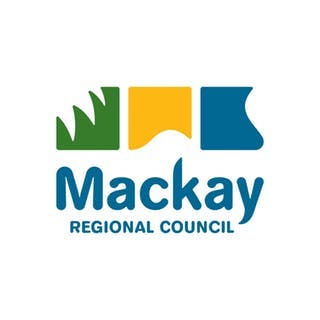Mackay Floodplain Risk Management Study and Plan
Consultation has concluded

The Mackay Floodplain Risk Management Study and Plan (the Plan) was a priority project from the Mackay Flood and Stormwater Management Strategy (adopted in 2017) as riverine flooding from the Pioneer River was identified as the greatest risk to the region in terms of flood hazard.
Consultants WRM were commissioned to prepare the Plan in order to better understand and mitigate this risk.
The draft plan was open to public comment and council reviewed the feedback and adopted the Mackay Floodplain Risk Management Study & Plan at the Ordinary Meeting on November 24, 2021.
The plan includes updated flood studies for:
- Pioneer River
- Mackay City (Sandfly Creek & Shellgrit Creek)
- Bakers Creek (Walkerston).
The studies will supersede the Goosepond Creek (including Pioneer River) Flood Study (WRM 2012), the Mackay CBD Drainage Study (AECOM 2015) and the Shellgrit Creek Flood Study (Cardno 2014). The Bakers Creek (Walkerston) Flood Study was undertaken separately to the Floodplain Management Plan and supersedes the Bakers Creek/Walkerston Flood Study (WRM 2013). The new Bakers Creek study was undertaken as part of the TC Debbie Flood Studies (2017-2019) and uses the new Pioneer River overflows determined in the Pioneer River Flood Study.
The study area for the Mackay Floodplain Management Plan is shown in Figure 1.

Figure 1 – Study area of Mackay Floodplain Management Plan
The various flood studies were updated considering the latest flood modelling techniques (Australian Rainfall and Runoff) and were calibrated (where relevant) to the TC Debbie event in March 2017.
Key findings of the flood studies are as follows:
- the Pioneer River discharges are consistently lower than the previous estimates except for the 0.2% Annual Exceedance Probability Event (AEP) event
- flood levels in Goosepond Creek for the Design Flood Event (DFE) are lower than the previous study considering the reduced discharges into Goosepond Creek from the Pioneer River
- flood levels in the Shellgrit Creek and Sandfly Creek catchment are similar to the previous studies
- flood levels in Bakers Creek are mostly higher in the Walkerston area.
The Australian Rainfall and Runoff (ARR) 2016 design rainfall for Mackay were applied in the model. The flood frequency analysis for the Goosepond Creek Catchment, performed on 20 years of data, raised concerns in adopting ARR 2016 in the catchment.
Figure 2 shows the dominant source of flooding in the Mackay region for the DFE which is the 1% Annual Exceedance Probability (AEP) event including climate change factor.

Figure 2 – Dominant source of flooding
Key findings on the dominant source of flooding are that storm tide now dominates in East and South Mackay (instead of Pioneer River overflow). Parts of Cremorne are potentially vulnerable to structural damage for the 1% AEP event.
The plan also included the development of flood damage estimates for Mackay. This was based on a survey of 25 properties in Mackay and supplemented with other data sourced from Brisbane. Assessing the damage caused by flooding is an important component of the floodplain management process as it is used in assessing the benefit cost ratio or various flood mitigation options.
The plan has investigated structural flood mitigation options to reduce the number of properties affected by above floor flooding. The largest number of properties impacted by above floor flooding were in the Mackay city area where there are 600 houses identified as experiencing above floor flooding from the Pioneer River in a 1% AEP event. Storm tide caused the second highest number of properties to experience above floor flooding with 344 houses identified as having above floor flooding from a 1% AEP storm tide event.
Structural mitigation options identified in Figure 3, that have been assessed include:
- Pioneer River Mackay CBD Levee - for the 1% AEP design event there is a reduction of 770 buildings potentially impacted by above floor flooding - high-level cost estimate of $7.3M
- Pioneer River Levee Valetta Gardens/Rivers Edge - high level cost estimate of $6.85M
- Mackay South Levee (Storm tide protection) - For the 1% AEP design event, there is a reduction of 449 buildings impacted by above floor flooding - high level cost estimate of $10M to $12.8M.

Figure 3 – Structural mitigation options proposed in the plan
Recommended floodplain risk management measures for Mackay include:
- progress with the investigation of the South Mackay levee
- update the flood overlay mapping in the planning scheme and provide user-friendly design flood level reporting for existing and development sites
- prepare local flood plans
- progress with the investigations into the Mackay CBD and Valetta Gardens/Rivers Edge levees
- consider a flood risk-based planning scheme amendment in the future
- develop and implement an ongoing flood education plan.
The plan underwent peer review by consultants BMT in 2019 and the reports were amended in 2020 considering the findings of the peer review. Key issues identified in the peer review included: climate change sensitivity; Goosepond Creek flows and storm tide starting water level. A further high-level peer review of the final reports was undertaken in late 2020 by consultants Water Technology. The 2021 reports have been amended considering Water Technology’s comments and the Mackay Ring Road has been included in the Flood modelling reports.
Concerns remain about the design flows in the Goosepond Creek Flood Study and this study is not expected to be adopted until the Bureau of Meteorology can provide comment and review of the 2016 rainfall data. The existing flood levels for Goosepond Creek from the 2012 study will remain until this work is finalised.
The flood extents and flood level information from the flood studies (excluding Goosepond Creek) are suitable for inclusion in the Mackay Region Planning Scheme and for use by other key stakeholders interested in flooding in these catchments.


